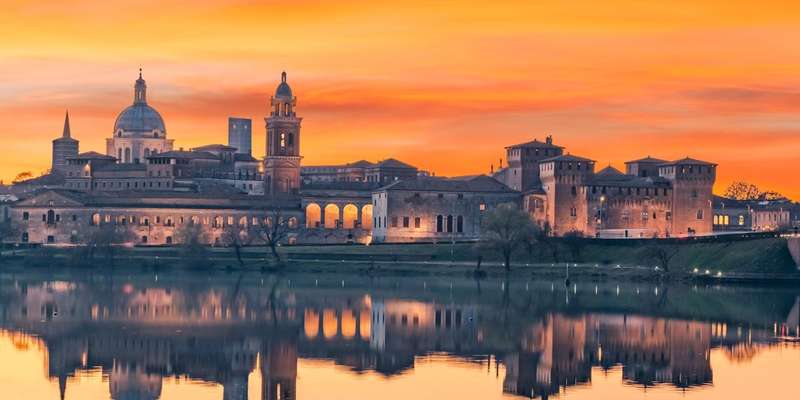- Home
- Useful Tips
- Mantua's best viewpoints for...
Capturing Mantua's legendary water reflections transforms ordinary travel photos into Renaissance paintings come to life. Yet most visitors cluster at Ponte San Giorgio, jostling for the same crowded composition while missing the city's true magic. Over 78% of amateur photographers report frustration with glare, obstructed views, or poorly timed visits that leave their images flat. The challenge isn't finding water – three lakes embrace this UNESCO city – but discovering vantage points where architecture and nature perform their daily light ballet. Locals know the secret: certain cobbled alleys and unmarked embankments frame palazzos with mathematical precision as the sun dips below the Po Valley. These spots require no professional gear, just awareness of how Mantua's golden hour behaves differently on each body of water.


Why your current viewpoint might be ruining the reflection effect
The most common mistake is assuming all water surfaces around Mantua create equal reflections. Lake Superior's vast expanse often develops wind ripples by late afternoon, while the smaller Lake Mezzo retains mirror-like stillness until sunset. Then there's positioning – standing directly opposite Palazzo Ducale seems logical, but the building's shadow can darken half your reflection during key shooting hours. Local photographers time their visits based on subtle seasonal shifts; from April to September, the best light occurs 90 minutes earlier than winter months due to the sun's trajectory over the Mincio river. Another overlooked factor is artificial lighting. Some modern street lamps along popular routes cast unnatural yellow hues that clash with the warm stone facades. The solution lies in scouting less obvious locations where natural and architectural elements align without interference.
Three undiscovered spots locals use for flawless reflections
Behind the Bibiena Theater lies a narrow canal most tourists ignore, where the water remains unnaturally still thanks to protective buildings on either side. Here, the curve of Sant'Andrea's dome appears upside-down with pixel-perfect clarity from 4:30 PM in summer. For wider cityscapes, the abandoned Pescherie docks on Lake Inferiore offer an unobstructed westward view. The crumbling brick arches frame reflections of Te Palace perfectly when shot from knee-level. But the true insider secret is Vicolo Bonacolsi's dead-end alley – arrive 40 minutes before sunset when sunlight bounces off a specific medieval wall onto the canal, creating a double reflection effect. These locations require no special access, just knowledge of timing and angles. A compact camera or even smartphones can capture professional results by using the built-in grid feature to align horizons with the reflection midline.
Camera settings that make water act like polished glass
Mantua's reflections demand technical adjustments beyond basic landscape photography. Start with a polarizing filter rotated to 60-70% strength – this cuts surface glare while preserving the water's mirror effect, something full polarization would destroy. Set your white balance to 'cloudy' or manually dial it to 6000K to enhance the golden brick tones. Locals shoot at f/8 to f/11 aperture for sharpness throughout the frame, with ISO kept at 100-200 to avoid noise in dark shadow areas. The magic happens with shutter speed; 1/125th of a second freezes minor ripples while still capturing movement in clouds, creating dynamic contrast with the static architecture. For smartphones, use Pro mode to lock exposure on the brightest part of the sky, then slightly underexpose (-0.7 EV) to saturate colors. These techniques work best during the 'blue minute' – the 15-minute window after sunset when the sky and water share identical hues.
Where to stay for spontaneous reflection hunting at dawn
The best reflection opportunities often occur at dawn when tourist crowds are absent, but reaching lakeside locations quickly is crucial. Small guesthouses in the Virgiliana district like Affittacamere delle Pescherie place you 200 meters from prime shooting locations, with rooms facing east to monitor first light conditions. For luxury seekers, Palazzo Castiglioni's fifth-floor suites have private balconies overlooking both Lake Mezzo and the skyline – ideal for testing compositions from bed. Budget travelers can exploit an odd local rule: bars along Via Calvi open at 5:30 AM for bakers and fishermen, providing warm vantage points with window access to reflection points. Wherever you stay, request a room not facing streetlights to avoid all-night glare affecting your night vision for early shoots. These strategic bases let you capture Mantua's most elusive moments – when mist rises vertically off the lakes, creating natural diffusion for ethereal reflection shots.



